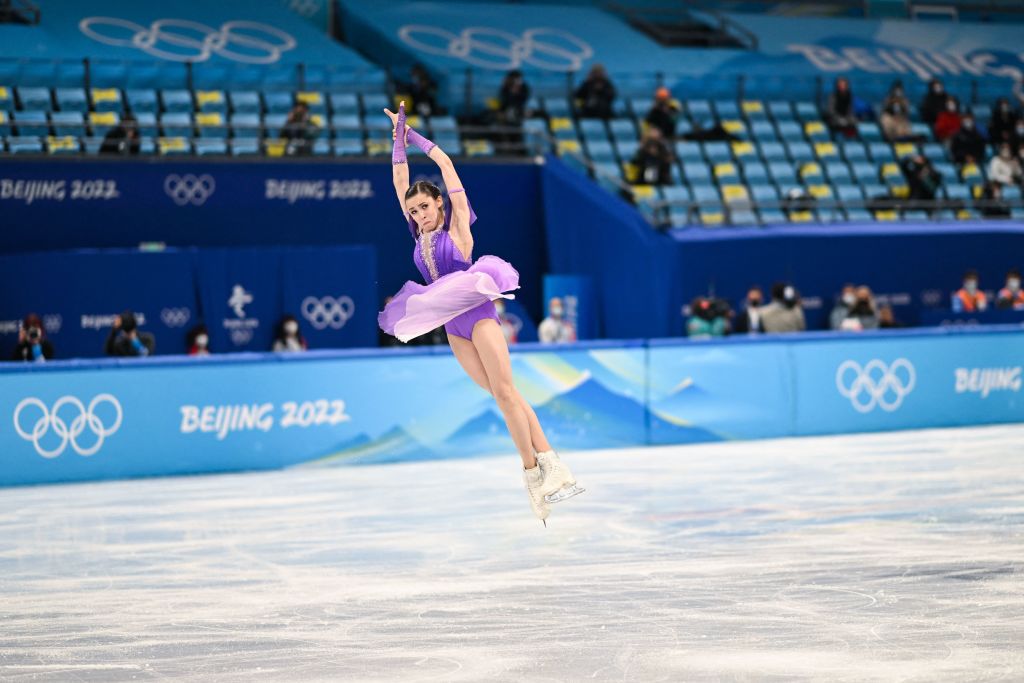Spectators at an Olympic figure skating competition are introduced to a whole new language. The vast majority of recreational skaters never get much further than skating forwards and backwards, with perhaps a little spin thrown in. Skaters who haven’t actually hurled themselves into the air and tried to rotate a couple (or more) times have a hard time distinguishing between the jumps.
In (arguable) order of difficulty, the jumps most often seen in Olympic figure skating competitions are toe loops, Salchows, loops, flips, Lutzes, and Axels. Salchows, Lutzes, and Axels are named after the people credited with introducing them.
Jumps are identified by the skater’s edge just before the jump begins, and whether or not the toe-pick is used to help propel the skater into the air. Here’s how to tell an Axel from Lutz, a flip from a toe-loop, and a loop from a Salchow.
Toe-pick Jumps in Olympic Figure Skating Competitions
In the following jumps, the skater takes off from a backward edge. The non-skating leg helps to propel the skater into the air by digging into the ice and pushing upward to help start the jump.
- Toe- loop: The jump starts with the skater gliding on a backwards outside edge, usually in a counterclockwise direction (Direction of rotation in spins and jumps is like right-handedness or left-handedness: Skaters tend to prefer one or the other, and a counterclockwise rotation is more common). The other foot reaches backwards and taps the ice with the toe-pick, which thrusts the skater into the air, where she spins in the air counterclockwise. This jump is commonly seen in combination because it can most easily be added to all the standard jumps, which all end on the back outside edge (the starting point for this jump). The toe-loop is most commonly performed as a triple or double jump, although it is occasionally attempted as a quadruple jump (1440 degrees of rotation in the air).
- Flip: The flip starts on the backwards inside edge. The free foot reaches backwards and picks the ice, and the skater goes up and rotates one, two, or three times.
- Lutz: This jump is the only jump where the skater changes the direction of rotation before the jump. A skater who typically rotates counterclockwise would start by skating backwards in a clockwise direction, gliding on the back outside edge. The free foot reaches backwards to tap the ice. When the toe-pick taps the ice, it both thrusts the skater up into the jump and changes the direction, so that the skater now rotates the jump in the counterclockwise direction. This change in rotation makes the Lutz the most difficult of. the jumps so far discussed.
Edge Jumps in Olympic Figure Skating Competitions
In the following jumps, the skater takes off from an edge with no help from the so-called “free” (non-skating) leg.
- Salchow: The Salchow starts with the skater turning onto the back inside edge The skater then swings the free leg around and up to help start the jump. The Salchow is an edge jump that starts on one foot and ends on the other.
- Loop: The loop is another edge jump. The skater begins on the backwards outside edge. Using the leg muscles of that leg alone, the skater jumps and turns at the same time, makes one or more revolution in the air, and ends the jump by landing on the same foot. The loop can be the second jump in any combination of two jumps, but without the help of the picking foot, it is much more difficult than the toe-loop.
- Axel: The Axel is the only one of the six standard jumps to take off from a forward position. This means that instead of 360 degree of rotation in the air, a single Axel has 540 degrees of rotation (one and a half turns). A double Axel has 900 degrees of rotation (two and a half turns). And a triple Axel has 1260 degrees of rotation (three and a half turns). While it has become common for male Olympic skaters to perform a triple Axel, women still struggle with it.
By paying attention to the edges the skater is gliding on and whether a toe pick is used to help start the jump, the spectator at a competitive figure skating event can better follow along with the commentary and understand which skaters are doing what jumps.
